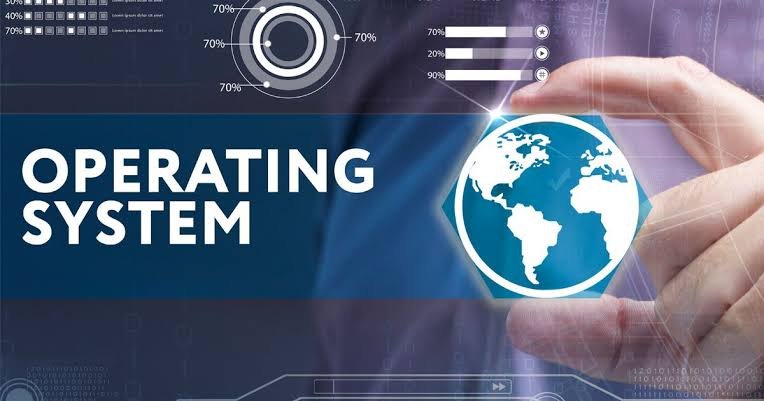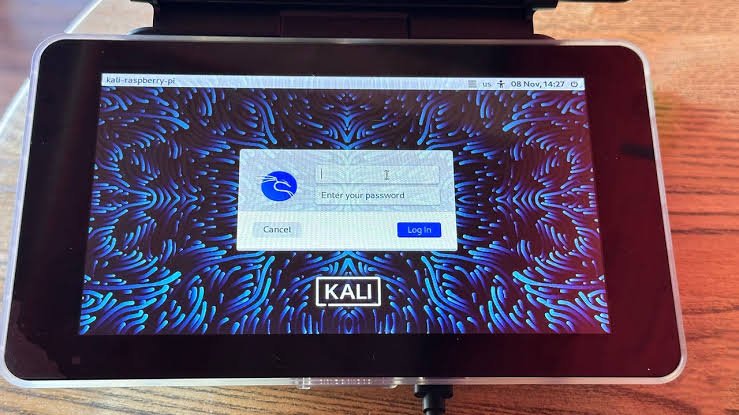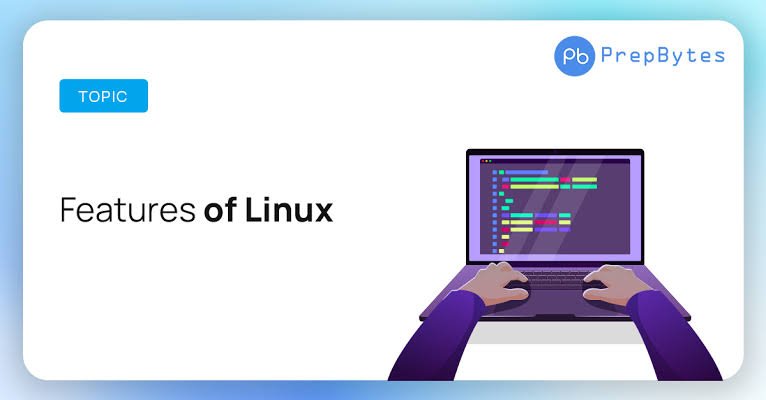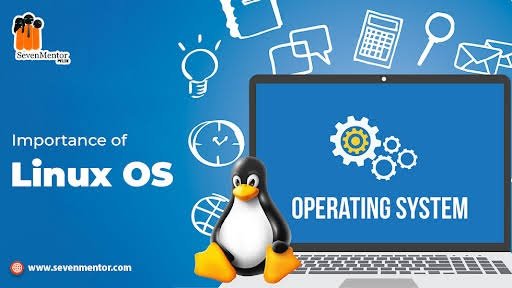Welcome to the world of Linuxia, the open-source operating system that has been taking the tech industry by storm! Whether you are a beginner or an experienced user, Linuxia offers a whole new level of freedom and flexibility. Gone are the days of being tied down to proprietary software and limited customization options. With Linuxia, you have complete control over your device and can tailor it to suit your needs perfectly.
But what exactly is Linuxia? In this ultimate guide, we will delve into its history, advantages, installation process, customization options, popular applications available on the platform, troubleshooting common issues that may arise, comparison with other operating systems out there in the market – and more! So fasten your seatbelts as we embark on an exciting journey through the world of Linuxia.
Advantages of Using Linuxia as Your Operating System

Linuxia offers a multitude of advantages that make it a compelling choice for users seeking an alternative operating system. One of the greatest benefits is its open-source nature, which means that the source code is freely available to anyone who wants to modify or enhance it. This fosters a strong community of developers who continually improve and update Linuxia, ensuring a stable and secure platform.
Another advantage of Linuxia is its versatility. It can be installed on various devices, including desktop computers, laptops, servers, and even embedded systems. This flexibility allows users to tailor their operating system to meet their specific needs.
One notable advantage of Linuxia is its stability and reliability. Due to its robust architecture and rigorous testing processes, Linux distributions are known for their ability to run continuously without crashing or requiring frequent reboots.
In addition to stability, Linuxia also boasts excellent performance capabilities. Its efficient design ensures that resources are utilized optimally, resulting in faster computing speeds compared to other operating systems.
Security is another key advantage offered by Linuxia. With regular security updates released by the community, vulnerabilities are quickly addressed and patched promptly – keeping your data safe from potential threats.
Furthermore, one significant perk of using Linuxia is the vast array of software options available through package managers such as apt-get or dnf repositories. These repositories offer thousands of free applications ranging from productivity tools like office suites and graphic design software to multimedia players and programming environments.
Choosing Linuxia as your operating system provides numerous advantages including freedom for customization based on individual requirements; stability; efficiency; enhanced security measures; access to extensive software libraries!
How to Install Linuxia on Your Device

Installing Linuxia on your device is a straightforward process that even beginners can easily follow. Here’s a step-by-step guide to help you get started with the installation:
1. Choose the Right Distribution: Linuxia offers various distributions, each tailored to different user needs. Research and select the one that best suits your requirements.
2. Create Installation Media: Once you’ve chosen a distribution, download the ISO file from the official website. You can then create bootable media using tools like Rufus or Etcher.
3. Backup Your Data: Before proceeding with the installation, it’s always wise to back up your important files and documents in case anything goes wrong during the process.
4. Boot from Installation Media: Insert your bootable media into your device and restart it. Access the BIOS settings by pressing F2 or Del key (the specific key may vary depending on your device). Set the USB drive as primary boot option.
5. Follow On-Screen Instructions: After rebooting, you’ll be greeted with Linuxia’s installation wizard. Simply follow the on-screen instructions carefully, selecting language preferences, partitioning options, and providing necessary information when prompted.
6. Configure User Accounts: During installation, you’ll need to create a username and password for accessing your Linuxia system securely.
7. Installation Complete! Once all steps are completed successfully ,the installer will notify you that Linuxia has been installed successfully on your device!
Remember that every distribution may have slight differences in their installation processes but following these general steps should give you an idea of how to install Linuxia on any compatible device.
Customization Options and Features of Linuxia

Customization is a key aspect of Linuxia that sets it apart from other operating systems. With Linuxia, you have the freedom to tailor your user experience to suit your needs and preferences. Whether you’re a minimalist who prefers a clean and simple interface or a power user who likes to tinker with every aspect of their system, Linuxia has got you covered.
One of the standout features of Linuxia is its extensive range of desktop environments. From the sleek and polished GNOME to the lightweight and customizable Xfce, there’s an option for everyone. Each desktop environment offers unique customization options, allowing you to personalize everything from your wallpaper and icons to your window manager and app launcher.
In addition to desktop environments, Linuxia also boasts a wide selection of themes and icon packs that can completely transform the look and feel of your system. Whether you prefer dark or light themes, flat or 3D designs, there’s something for every aesthetic preference.
Another area where Linuxia excels in customization is software management. With package managers like apt-get and pacman, installing new applications or removing unnecessary ones is just a few commands away. Plus, thanks to the vast repository of open-source software available for Linuxia users, there’s no shortage of options when it comes to finding tools that fit your specific needs.
For those who love tweaking under-the-hood settings, Linuxia provides access to powerful configuration files such as /etc/hosts.allow which allows fine-grained control over network access permissions.
Moreover , if you are into scripting or want more advanced customizations ,Linux shell scripting grants endless possibilities . You can write scripts that automate tasks , schedule events using cron jobs etc .
Whether it’s changing fonts or icons on your desktop environment ,customizing keyboard shortcuts or even building an entirely customized distribution using tools like Arch linuxiso builder – The sky’s the limit!
Popular Applications and Software Available on Linuxia
Linuxia offers a wide range of popular applications and software that cater to various needs and preferences. Whether you are a developer, designer, or simply an everyday user, Linuxia has something for everyone.
For developers, Linuxia provides powerful tools such as GCC (GNU Compiler Collection), which allows you to compile and run your code efficiently. Additionally, the platform supports popular programming languages like Python, Java, C++, and more.
Designers can take advantage of graphic editing software like GIMP (GNU Image Manipulation Program) and Inkscape. These applications provide professional-grade tools for image editing and vector graphics creation.
If you’re looking for productivity software, Linuxia has got you covered with LibreOffice – a complete office suite that includes word processing, spreadsheet management, presentation design capabilities, and more. It is fully compatible with Microsoft Office formats so you can easily collaborate with colleagues using different operating systems.
For multimedia enthusiasts, Linuxia offers media players like VLC Media Player that can handle various file formats effortlessly. You can also explore music production software like Ardour or video editing tools such as OpenShot Video Editor to unleash your creativity.
In terms of security and privacy-conscious apps on Linuxia; there’s Firefox web browser which prioritizes user privacy through features like enhanced tracking protection while offering seamless browsing experience across multiple platforms.
These are just a few examples of the vast array of applications available on Linuxia. The open-source nature of the platform encourages developers worldwide to create innovative solutions tailored to specific needs. So whether it’s gaming, development workstations or specialized software for scientific research – rest assured that Linuxia has plenty to offer in terms of versatility and functionality!
Troubleshooting Common Issues on Linuxia
Using Linuxia as your operating system can offer a range of benefits, but like any technology, it’s not immune to occasional hiccups. Luckily, many common issues that users encounter with Linuxia can be easily resolved with some troubleshooting techniques.
One common issue that users may face is difficulty connecting to Wi-Fi networks. If you’re unable to connect wirelessly, check if the wireless card driver is installed and up-to-date. You can also try restarting the network manager service or resetting your router.
Another issue that might arise is sound problems. If you’re experiencing no sound or poor audio quality, first ensure that your speakers or headphones are properly connected. Then check the volume settings and make sure they are not muted or set too low. Updating audio drivers can also help resolve sound-related issues.
Sometimes, users may encounter compatibility issues when trying to install certain software packages on their Linuxia system. In such cases, it’s important to check if there are alternative versions available or if there are any community-developed patches or workarounds.
Occasionally, you may experience slow performance on your Linuxia system. This could be due to high CPU usage by certain processes or applications running in the background. Use task manager tools like htop to identify resource-intensive processes and consider closing unnecessary ones.
If you encounter frequent crashes or freezes while using Linuxia, it could indicate a hardware problem such as faulty RAM modules or overheating components. Running diagnostic tests for hardware health can help pinpoint and resolve these issues.
Remember that these are just a few examples of common problems faced by Linuxia users; each situation may require specific troubleshooting steps tailored to the issue at hand. The key is patience and perseverance in finding solutions through online forums and communities dedicated to supporting Linux users.
Comparison with Other Operating System
When it comes to choosing an operating system for your device, there are several options available in the market. Linuxia stands out as a unique and powerful open-source operating system that offers numerous advantages over its competitors.
Unlike proprietary operating systems such as Windows or macOS, Linuxia is free to use and distribute. This makes it an attractive choice for individuals and organizations looking to save costs without compromising on functionality.
Another key advantage of Linuxia is its flexibility and customization options. With Linuxia, users have complete control over their system’s appearance and behavior. They can choose from a wide range of desktop environments and themes to create a personalized computing experience.
Moreover, Linuxia boasts excellent security features. Its open-source nature allows for constant monitoring by a global community of developers who quickly identify vulnerabilities and release updates accordingly. This ensures that your data remains safe from potential threats.
In terms of performance, Linuxia often outperforms other operating systems due to its lightweight design and efficient resource management. It can run smoothly even on older hardware configurations, making it suitable for both high-end machines and low-powered devices.
Additionally, one of the standout aspects of using Linuxia is its vast software ecosystem. While some may argue that Windows or macOS offer more applications, Linuxia has seen significant growth in recent years with many popular software now being compatible with the platform.
Furthermore, troubleshooting common issues on Linuxia is relatively straightforward compared to other operating systems thanks to extensive online documentation resources as well as active support communities where users can seek help from experienced members.
Conclusion
The Linuxia operating system offers a multitude of benefits, making it an attractive choice for both tech enthusiasts and casual users alike. With its rich history and robust features, Linuxia has established itself as a reliable and versatile platform.
By choosing Linuxia as your operating system, you gain access to a vast array of advantages. Its open-source nature allows for constant development and improvement by the community. This means that bugs are quickly addressed, security updates are promptly released, and new features can be added regularly.
Installing Linuxia is a straightforward process that can be done on various devices such as desktop computers or laptops. The installation process typically involves creating a bootable USB drive or DVD from the downloaded ISO file. From there, you can follow the step-by-step instructions provided during the installation wizard.
One of the key highlights of Linuxia is its customization options and user-friendly interface. Users have the freedom to personalize their desktop environments with different themes, icons sets, and window managers according to their preferences.
Additionally, Linuxia provides users with access to popular applications and software through package managers like apt-get or yum. These repositories house thousands of free software options ranging from productivity tools to multimedia applications – all easily installable with just a few clicks.
Troubleshooting common issues on Linuxia is often simpler compared to other operating systems due to its transparent nature. The strong online presence of dedicated communities ensures that assistance is readily available when encountering any challenges while using this OS.
When comparing Linuxia with other operating systems like Windows or macOS in terms of performance, stability, flexibility – it stands out as an excellent alternative for those seeking greater control over their computing experience without sacrificing reliability.
Linuxia offers countless advantages including its open-source nature allowing for continuous development and improvement by the community; easy installation process; customizable interface; wide range of software options; accessibility to online support communities; superior performance compared to other OS.
FAQ’s
1. Is Linuxia compatible with all devices?
Linuxia is compatible with a wide range of devices, including desktop computers, laptops, servers, smartphones, and even embedded systems. However, it’s always recommended to check the system requirements before installing Linuxia on your device.
2. Can I still use my favorite applications on Linuxia?
Yes! Linuxia offers a vast array of popular applications and software that can cater to various needs. Many well-known programs like LibreOffice for productivity tasks, GIMP for image editing, VLC Media Player for media playback are available on Linuxia.
3. How do I troubleshoot common issues on Linuxia?
If you encounter any issues while using Linuxia, there are several resources available to help you troubleshoot them. Online forums and communities dedicated to Linux can provide valuable insights and solutions to common problems faced by users.
4. How does Linuxia compare to other operating systems like Windows or macOS?
Linux has its unique advantages over other operating systems such as being open-source (allowing customization), more stable performance due to its UNIX-based architecture, better security features that reduce vulnerability risks significantly.
5. Is it difficult for beginners to install and use Linuxia?
While there may be a slight learning curve initially if you’re new to the world of Linux operating systems, many distributions like Ubuntu and Mint offer user-friendly interfaces that make installation and usage relatively easy even for beginners.

